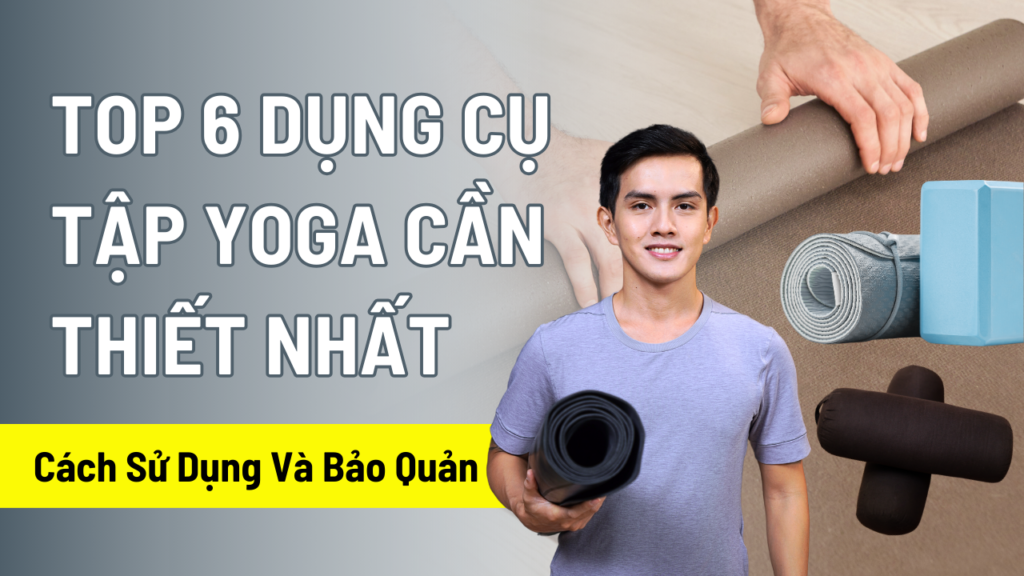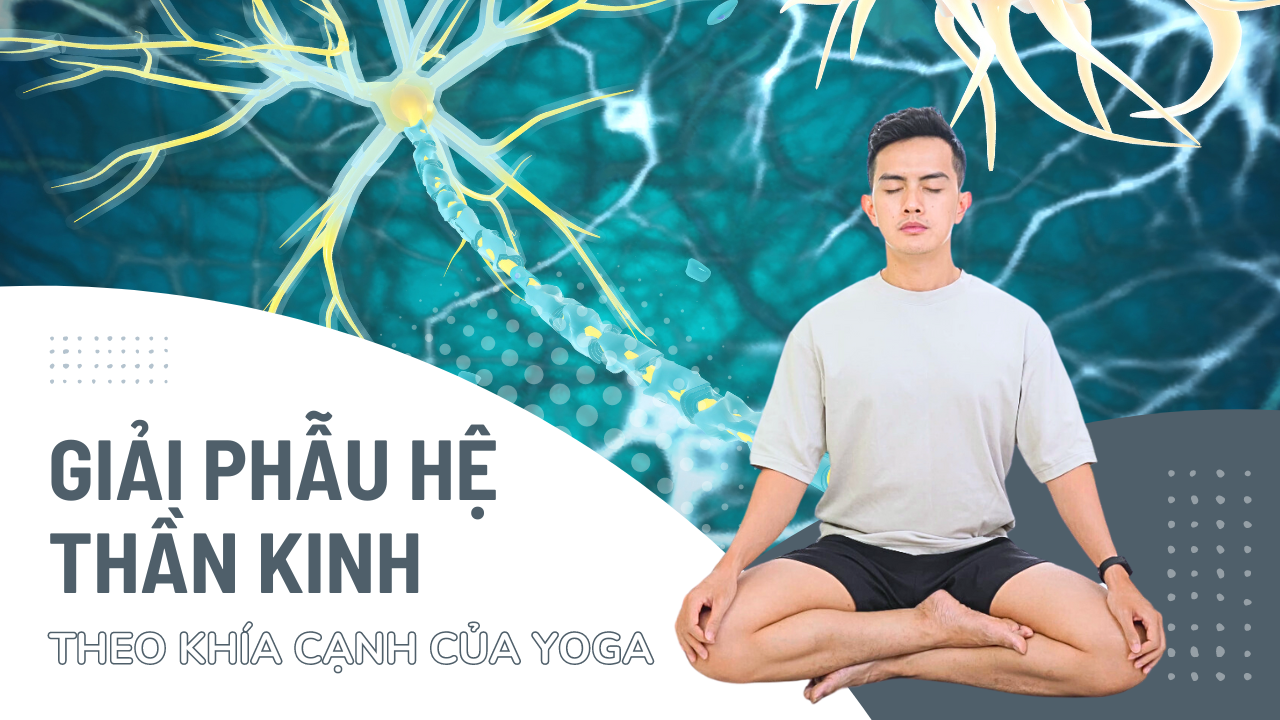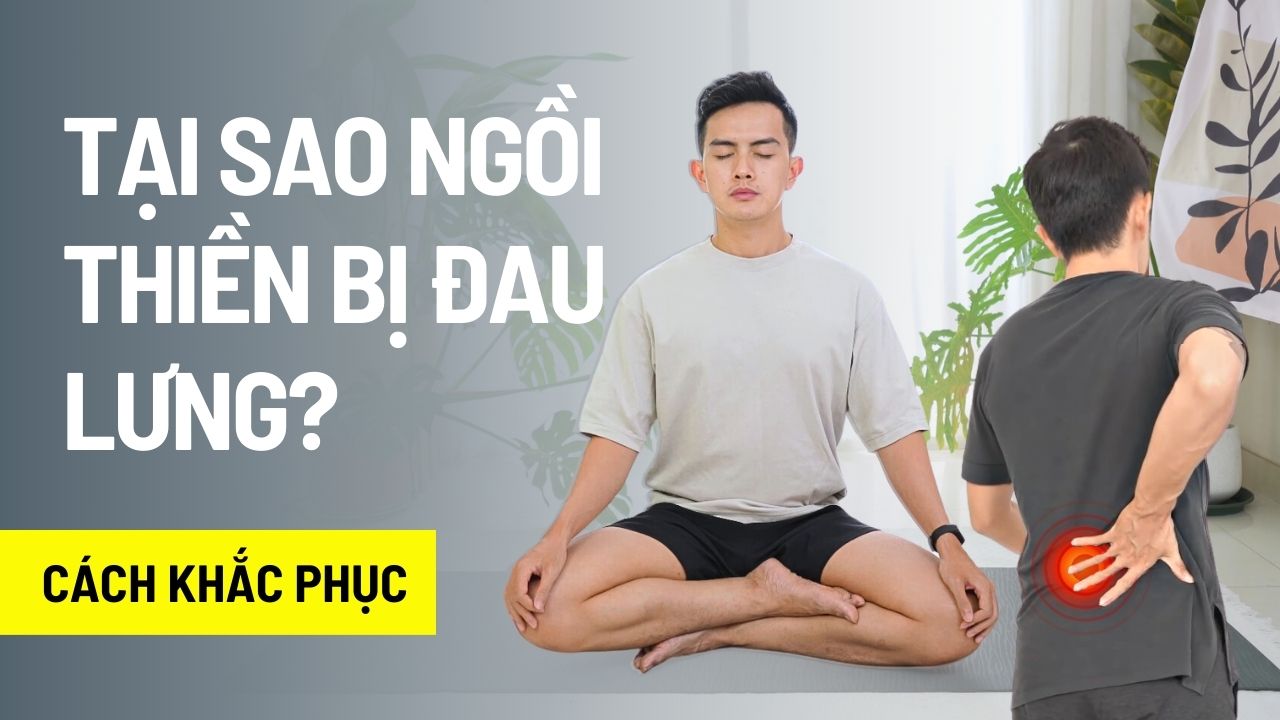In yoga, there are many support tools to help enhance the practice experience. From improving posture to increasing strength and flexibility, each tool has its own role to play in your yoga journey. Today, we will explore together the 6 most necessary Yoga tools as well as how to use and preserve them. Read on and discover what these tools are.
1. Yoga mat
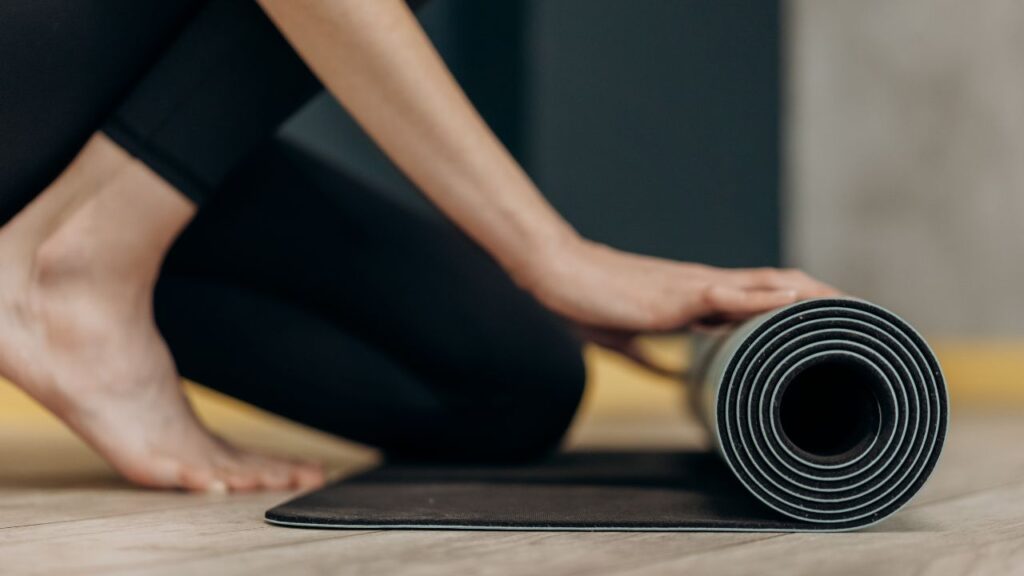
Yoga mats are an indispensable companion in every practice session. It is more than just a mat, it is the foundation for your safety and comfort. Yoga mats provide soft cushioning, helping to protect the body from hard surfaces, while also creating the friction needed to maintain posture, especially during balance or stretching movements.
Using a yoga mat can significantly reduce pressure on joints during exercise, thereby reducing the risk of injury and increasing the effectiveness of the exercise.
Refer to yoga mats here.
2. Yoga straps
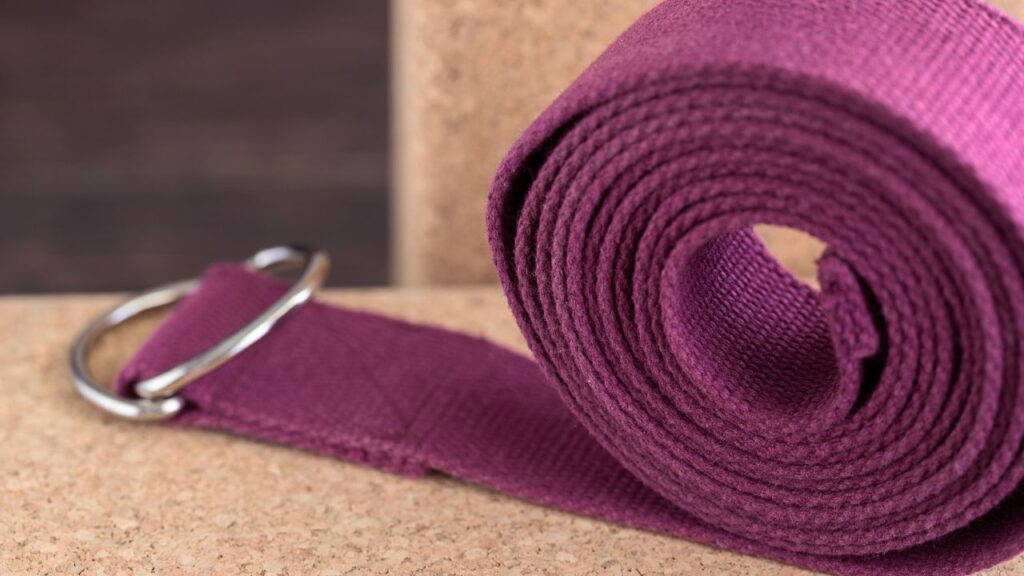
Yoga straps are versatile tools, especially useful for beginners or those who want to improve their stretching abilities. This band is used to aid in stretching and increasing flexibility. You can use it to hold poses longer, achieve greater depth in stretching positions, or even as an aid in difficult balancing moves.
Regular use of yoga straps can significantly improve the body's flexibility, especially in the lower back and legs.
Refer to yoga ropes here.
3. Yoga pillow
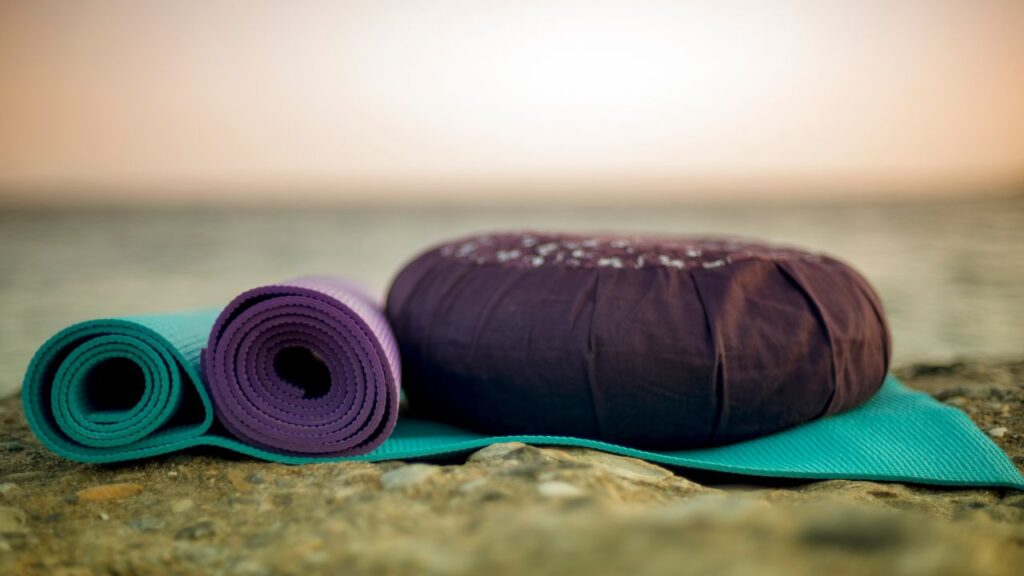
Yoga pillows are a great support tool, especially during meditation or positions that require support. It helps with posture and supports the body during exercises, especially for those with joint problems or who need extra comfort during prolonged positions.
Yoga pillows can be used to elevate the hips in sitting positions, support the knees in kneeling positions, or even help stretch the spine in supine positions. Using a yoga pillow can help maintain proper spinal alignment during seated positions, thereby reducing stress on the back and improving overall posture.
Refer to yoga pillow here.
4. Yoga Block (Yoga Brick)
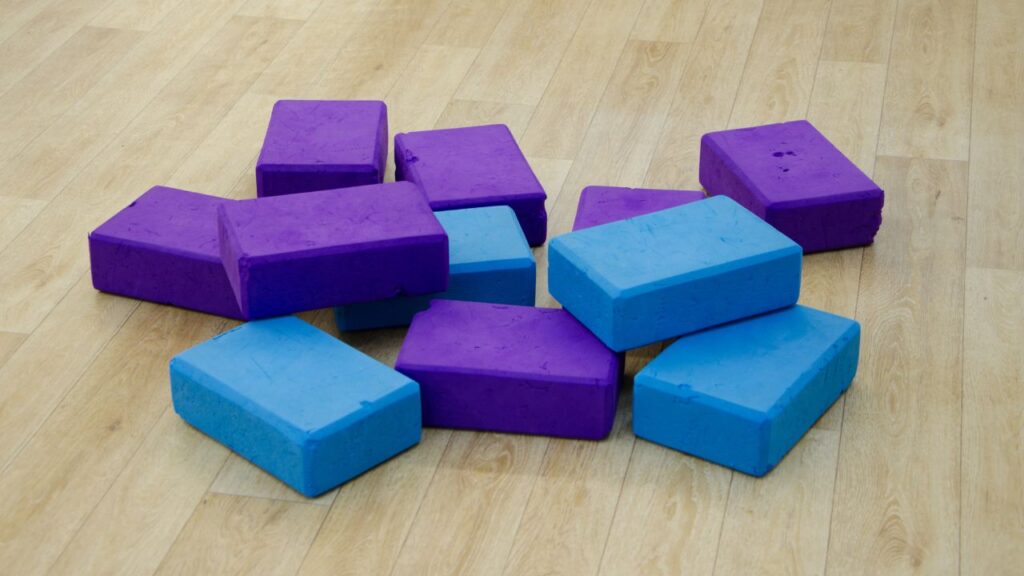
A yoga block is a versatile tool, used to support the body and aid balance. They are especially useful in correcting posture, helping you achieve depth and precision in poses that you cannot yet perform perfectly.
Yoga blocks can be placed under the arms, legs or buttocks to elevate the practice surface, helping you maintain correct posture and avoid unnecessary muscle strain. Using yoga blocks in balance exercises can significantly improve postural control and reduce the risk of falls, especially in older adults.
Check out yoga blocks and bricks here.
5. Yoga ring
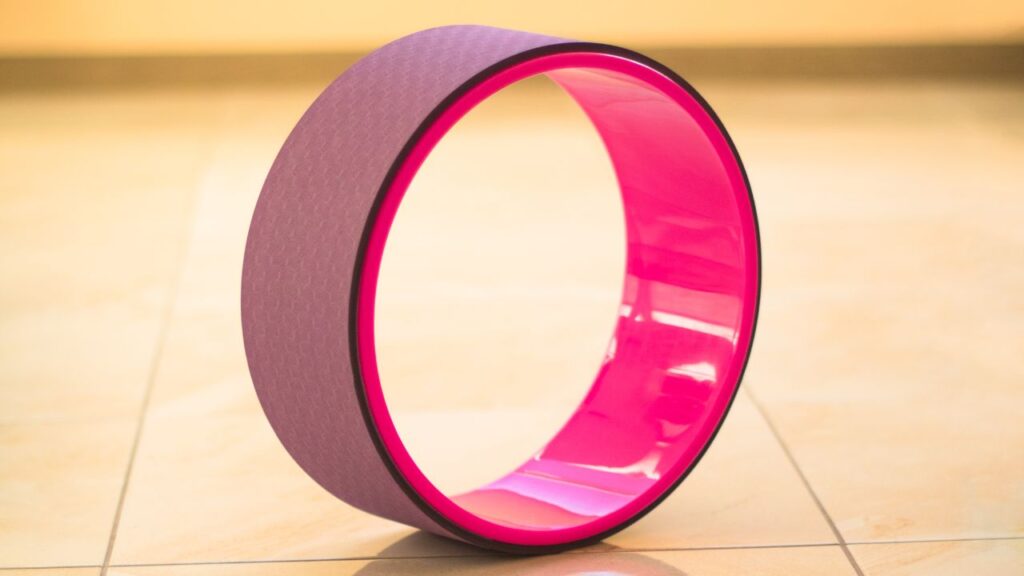
Yoga rings are a great tool for increasing strength and flexibility. It is often used in shoulder, chest and back stretching exercises. Yoga rings are also helpful in improving posture, especially in backbends.
You can use a yoga ring to provide resistance during strength exercises or as a support frame during difficult balancing poses. Using yoga rings in stretching exercises can significantly improve spinal flexibility and reduce chronic back pain.
Refer to the yoga circle here.
6. Yoga Ball
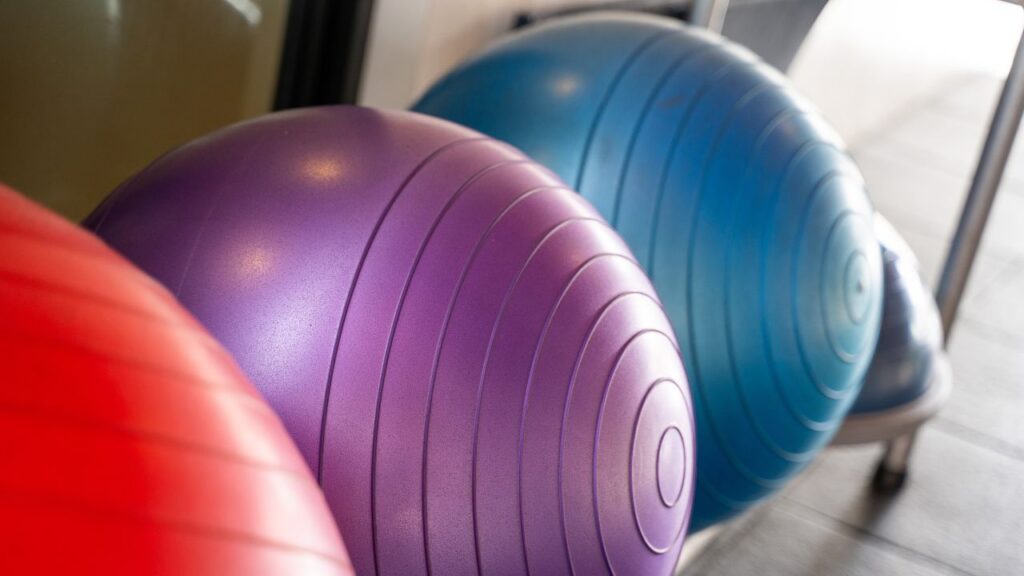
A yoga ball, also known as a stability ball, is a versatile tool used to massage muscles and relieve stress. It is also helpful in strengthening core strength and improving balance.
Yoga balls can be used for support in yoga poses, as a tool for self-massage, or in pilates and fitness exercises. Using a yoga ball in core exercises can significantly improve the strength and stability of the abdominal muscles, thereby improving posture and reducing back pain.
Refer to the yoga ball here.
Criteria for choosing yoga equipment
When choosing yoga gear, there are some important criteria to consider to ensure you get the best workout experience:
- Material: For yoga mats, choose ones made from natural rubber or high-quality PVC. These materials are not only easy to clean but also have good grip, helping to avoid slipping during exercise. Yoga mats made from natural materials like rubber can minimize exposure to toxic chemicals compared to PVC mats.
- Thickness: Yoga mats with a thickness of 3 to 6mm are usually suitable for most people. This thickness provides enough cushioning to protect joints without losing the feeling of connection to the ground.
- Size: Standard yoga mats are usually about 68 x 180 cm in size. However, if you are taller than average, you may consider choosing a longer mat.
- Reliability: Choose tools with good quality, high bearing capacity and high durability. This not only helps save long-term costs but also ensures safety during use.
How to use and preserve yoga equipment
To ensure your yoga equipment stays in good condition and prolongs its lifespan, proper use and storage is important:
- Spread the yoga mat on a flat surface, avoiding sharp objects that can damage the mat. If possible, use mats on wood floors or carpeting to minimize wear and tear.
- Clean the yoga mat with a damp cloth after each use. For deep cleaning, you can use a specialized yoga cleaning solution or dilute vinegar with water in a 1:4 ratio.
- Store yoga equipment in a cool, dry place and away from direct sunlight. Sunlight can damage and discolor your yoga gear over time.
- Replace yoga straps when you see signs of wear, tear, or lack of elasticity. Using damaged yoga straps can lead to unwanted injuries.
- For yoga balls, check the pressure regularly and re-inflate if necessary. A deflated ball can affect the effectiveness of the exercise and can even be dangerous.
- Wash pillows and yoga blocks with mild soap and warm water as needed, then let dry completely before using again.
Regularly cleaning yoga equipment can significantly reduce the growth of bacteria and fungi, thereby reducing the risk of skin infections.
Conclude
Choosing and using the right yoga equipment not only enhances your practice experience but also ensures safety and effectiveness during practice. From basic yoga mats to support equipment such as bands, pillows, blocks, rings and yoga balls, each tool has its own role in supporting and enhancing your abilities.
Remember, the best tool is the one that suits your needs and level of practice. Don't be afraid to experiment with different tools to find what works best for you. And most importantly, take care of your yoga tools properly so that they can accompany you for a long time on your yoga path.
Wishing you a wonderful yoga experience with your support equipment!

